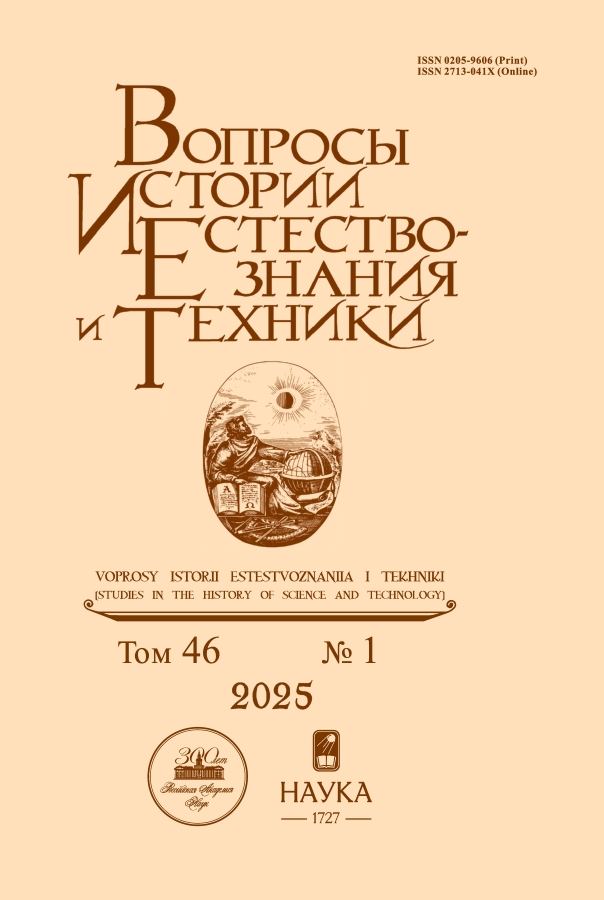German “Technical Miracle” in the Soviet Testing Ground: German Machines in Agricultural Concessions in the USSR in the 1920s
- Authors: Morozova O.M.1
-
Affiliations:
- Don State Technical University
- Issue: Vol 46, No 1 (2025)
- Pages: 75-97
- Section: Lessons from History
- URL: https://rjmseer.com/0205-9606/article/view/684642
- DOI: https://doi.org/10.31857/S0205960625010051
- EDN: https://elibrary.ru/CNQWTP
- ID: 684642
Cite item
Abstract
The restoration of the economic mechanism in Soviet Russia after the end of the Civil War in its territory encountered significant difficulties, further complicated by the economic blockade by the Western powers. In addition to investments, the RSFSR Peopleʼs Commissariat of Foreign Affairs together with the Concession Committee under the Presidium of the Supreme Council of National Economy, set up in 1921, were seeking access to scientific and technical innovations, establishing relations with foreign companies. In the 1920s, civilian cooperation in the field of technology was carried out in the form of the concession enterprises. The standard concession agreement included a clause of mandatory modernization of production processes. To this end, considerable privileges were granted for importing equipment (machinery, cars, etc.) in the USSR. The most active participant in the Soviet concession program was German business, which had been under restrictions on the global market after World War I. German businessmen traditionally geared towards Russian consumers and raw materials. They regarded the concessions granted to them as an opportunity to import goods in the USSR duty-free, these goods being primarily agricultural and automotive equipment that could be purchased for next to nothing in Germany after the hyperinflation that hit its economy in 1923. German machines were often imported without production justification and without regard to their suitability for Russian conditions, and their testing sometimes resulted in premature wear, downtime, and losses. In this context American models appeared preferable, which determined the main direction of technical cooperation in the 1930s. The documents of the Main Concession Committee that formed the basis of the study reflect a broad range of problems and issues related to the evaluation of the results of using foreign equipment in the Soviet production facilities.
Keywords
Full Text
About the authors
Olga M. Morozova
Don State Technical University
Author for correspondence.
Email: olgafrost@gmail.com
Russian Federation, Pl. Gagarina, 1, Rostov-on-Don, 344006
References
- Artiukov, O. V. (2001) Sovetsko-germanskie otnosheniia v 1925–1933 gg.: dis. ... kand. ist. nauk [Soviet-German Relations in 1925–1933. Thesis for the Candidate of Historical Sciences Degree]. Moskva.
- Baikov, A. Iu. (2007) Sovetsko-germanskoe voennoe i voenno-tekhnicheskoe sotrudnichestvo 1920–1933 gg.: dis. ... kand. ist. nauk [Soviet-German Military and Military-Technical Cooperation 1920–1933. Thesis for the Candidate of Historical Sciences Degree]. Moskva.
- Bochinin, D. A. (2012) Tekhnicheskaia pomoshch’ germanskoi firmy “Krupp” leningradskim metallurgam v proizvodstve vysokokachestvennoi stali dlia aviastroeniia v nachale 1930-kh gg. [Technical Aid in the Production of High-Quality Steel for Aircraft Construction, Provided by the German Company Krupp to the Leningrad Metallurgists in the Early 1930s.], Istoricheskie, filosofskie, politicheskie i iuridicheskie nauki, kul’turologiia i iskusstvovedenie. Voprosy teorii i praktiki, no. 1 (15), pt. 1, pp. 38–40.
- Bracher, K. D. (1955) Die Auflösung der Weimarer Republik. Eine Studie zum Problem des Machtverfalls in der Demokratie. Stuttgart and Düsseldorf: Ring-Verlag.
- Butkovskii, V. P. (1928) Inostrannye kontsessii v narodnom khoziaistve SSSR [Foreign Concessions in the National Economy of the USSR]. Moskva and Leningrad: Gosizdat.
- Gurov, P. Ia. (ed.) (1928) Krest’ianskaia sel’skokhoziaistvennaia entsiklopediia [Peasant Agricultural Encyclopedia]. Moskva and Leningrad: Gosizdat, vol. 7.
- Kantor, Iu. Z. (2006) Voenno-politicheskie otnosheniia Sovetskoi Rossii i Germanii 1921–1939 gg.: dis. … d-ra ist. nauk [Military-Political Relations between Soviet Russia and Germany in 1921–1939. Thesis for the Doctor of Historical Sciences Degree]. Sankt-Peterburg.
- Konradi Gustav Germanovich [Gustav Germanovich Konradi], in: Obshchestvo Druzei Shkoly Karla Maia [The Society of Friends of Karl Mayʼs School] (http://www.kmay.ru/sample_pers.phtml?n=1557).
- Kosmach, V. A. (1984) Germano-sovetskie nauchno-tekhnicheskie i kul’turne sviazi v 1922–1932 gg. (iz istorii kul’turnoi politiki Germanii v otnoshenii SSSR): dis. ... kand. ist. nauk [German-Soviet Scientific, Technical and Cultural Relations in 1922–1932 (From the History of Germany’s Cultural Policy towards the USSR). Thesis for the Candidate of Historical Sciences Degree]. Minsk.
- Kosmach, V. A. (2023) G. Khil’ger o voennom sotrudnichestve Germanii i Sovetskoi Rossii (SSSR) v 1920–1930 gg. [G. Hilger on Military Cooperation between Germany and Soviet Russia (USSR) in the 1920s – 1930s], in: Kosmach, V. A. (ed.) Istoricheskaia germanistika: aktual’nye problemy sovremennykh issledovanii: sb. nauchnykh statei i materialov [Historical German Studies: Current Issues in Modern Research: A Collection of Scientific Articles and Materials]. Pskov: OOO “Logos”, pp. 171–190.
- Kushner, B. (1927) Krupp i Manych: ocherk [Krupp and Manych: An Essay], Novyi Lef, no. 11–12, pp. 3–12.
- Markuze, G. (2005) Historical Dollar-to-Marks Conversion Page, https://marcuse.faculty.history.ucsb.edu/projects/currency.htm.
- Rezanenko, O. O. (2018) Inostrannye spetsialisty na promyshlennykh predpriiatiiakh Stalingrada v kontse 1920-kh – 1930-e gg.: dis. ... kand. ist. nauk [Foreign Specialists at Industrial Enterprises in Stalingrad in the Late 1920s and 1930s. Thesis for the Candidate of Historical Sciences Degree]. Volgograd.
- Shpotov, B. M. (2019) Amerikanskii biznes i Sovetskii Soiuz v 1920–1930-e gody: labirinty ekonomicheskogo sotrudnichestva [American Business and the Soviet Union in the 1920s and 1930s: Labyrinths of Economic Cooperation]. Moskva: URSS.
- Sobolev, V. S. (2015) Iz istorii sviazei v oblasti nauchno-tekhnicheskogo sotrudnichestva mezhdu Germaniei i SSSR vo vtoroi polovine 1920-kh godov [From the History of Relations in the Field of Scientific and Technical Cooperation between Germany and the USSR in the Second Half of the 1920s], Sotsiologiia nauki i tekhnologii, vol. 6, no. 2, pp. 60–67.
Supplementary files














